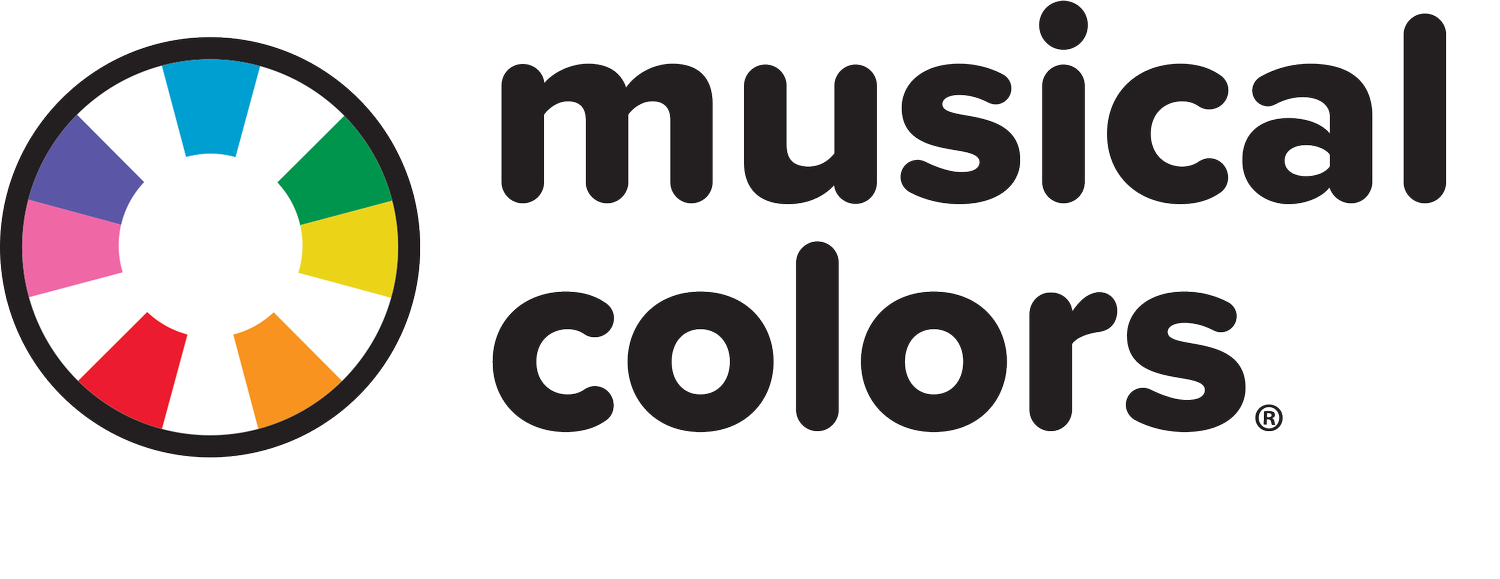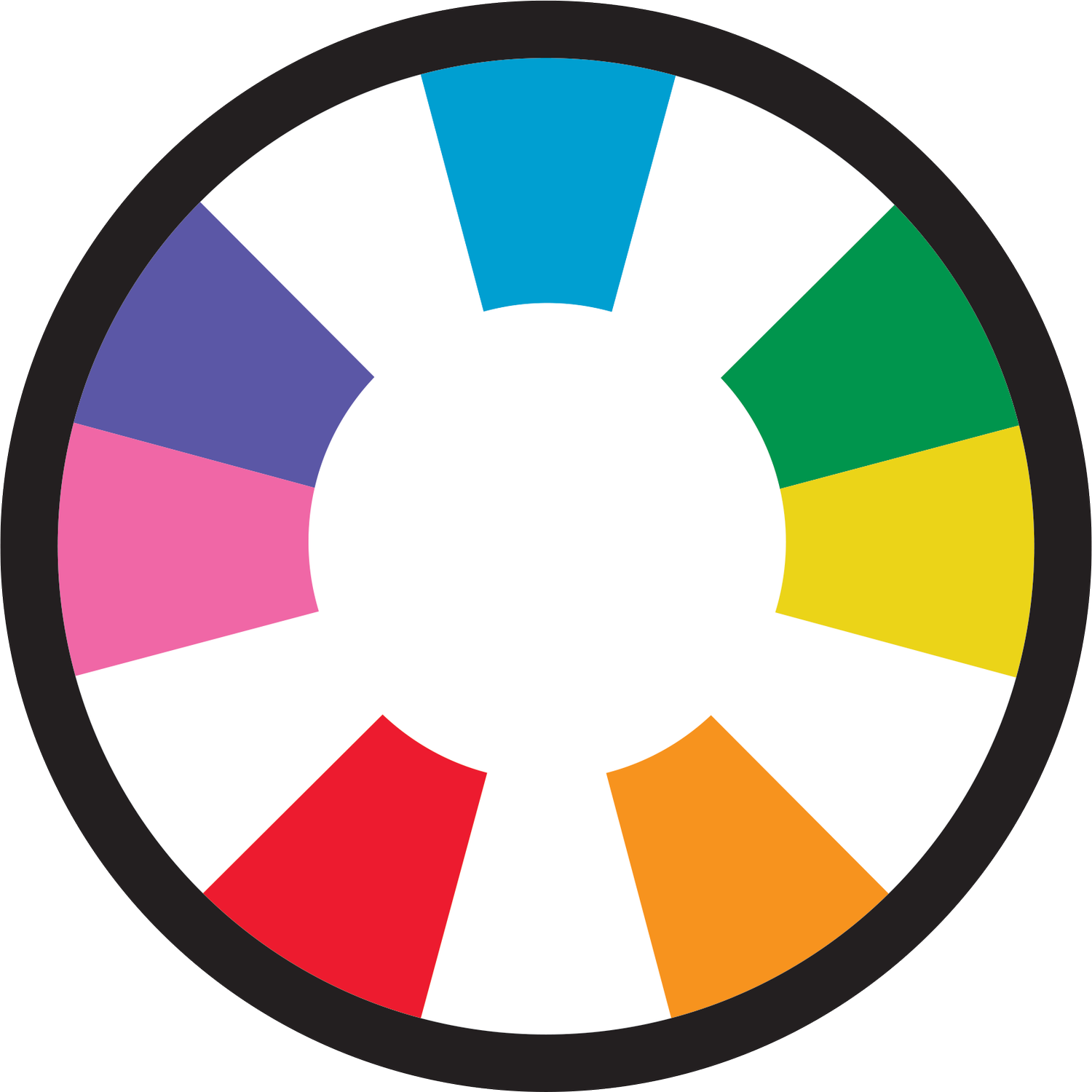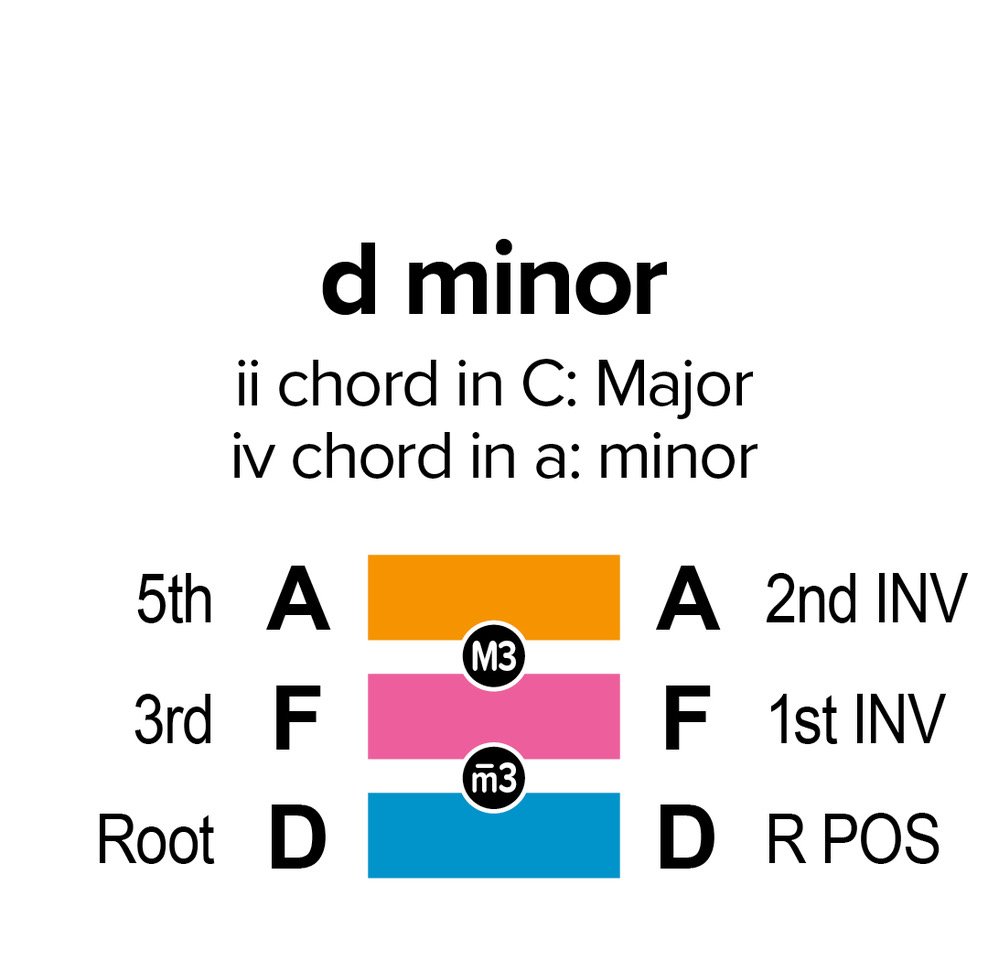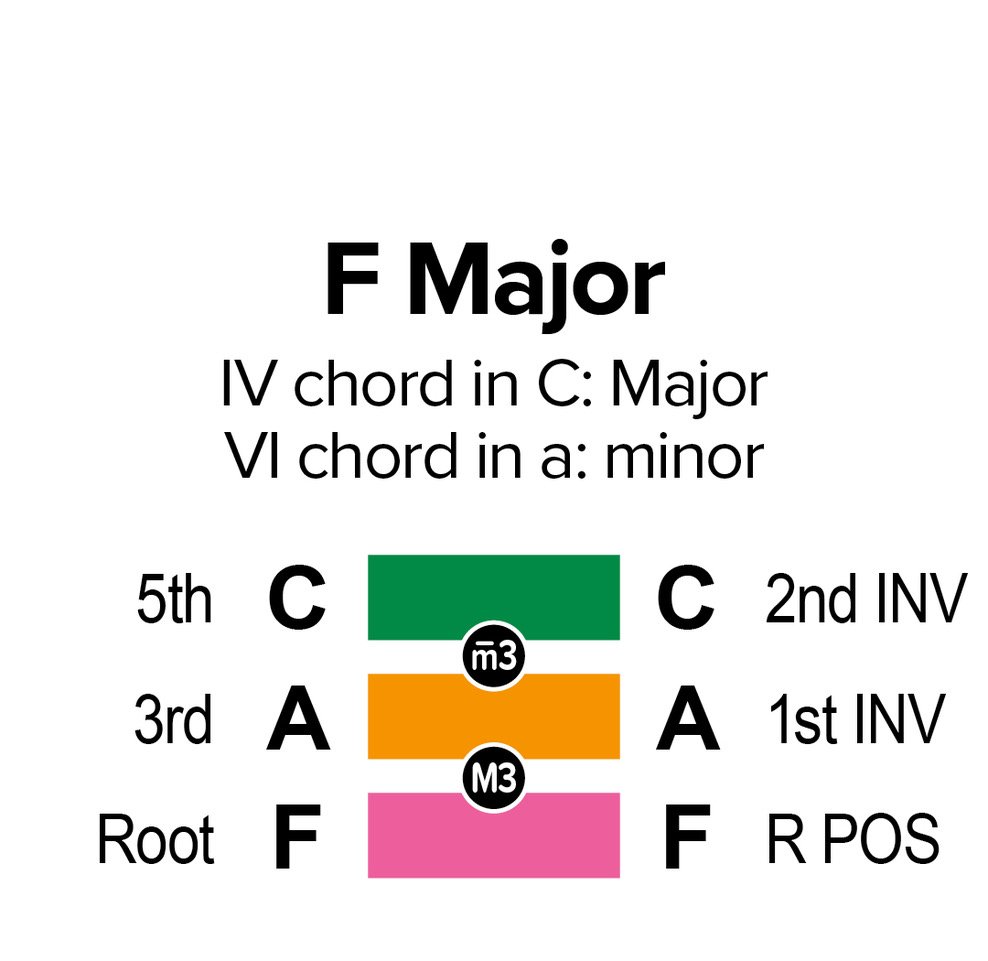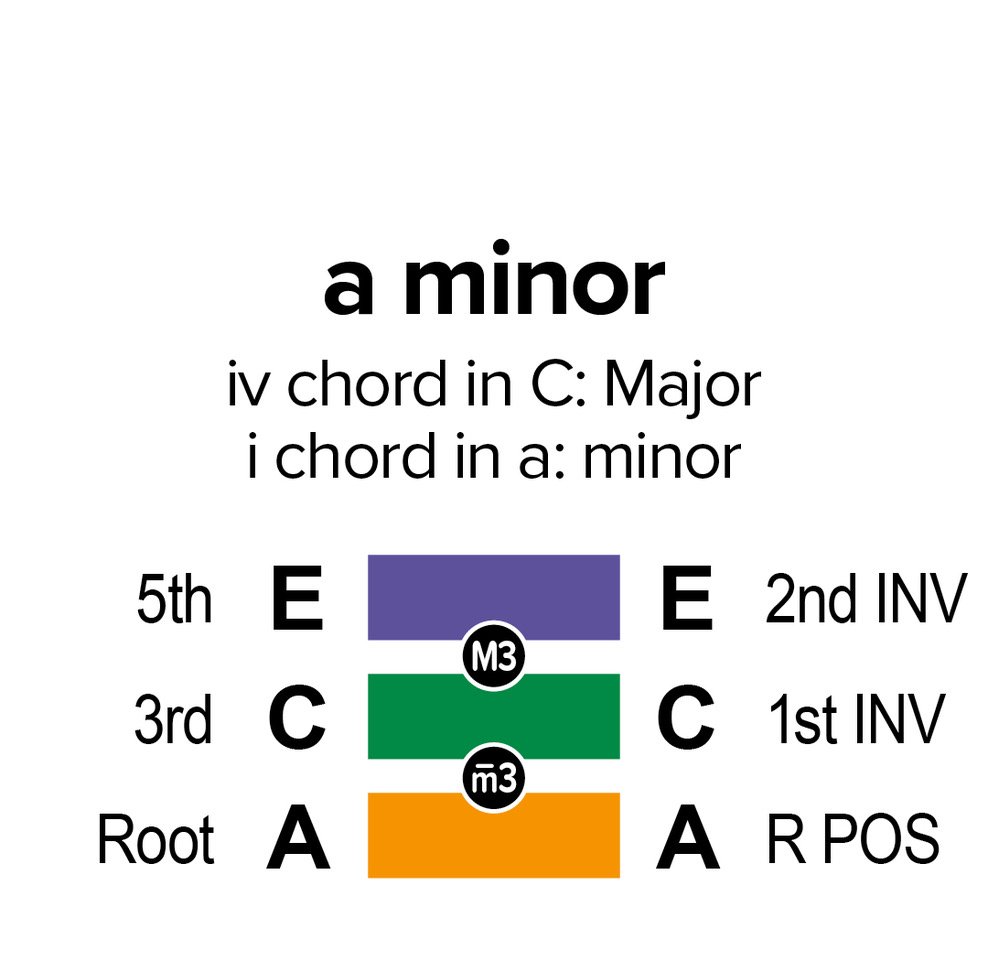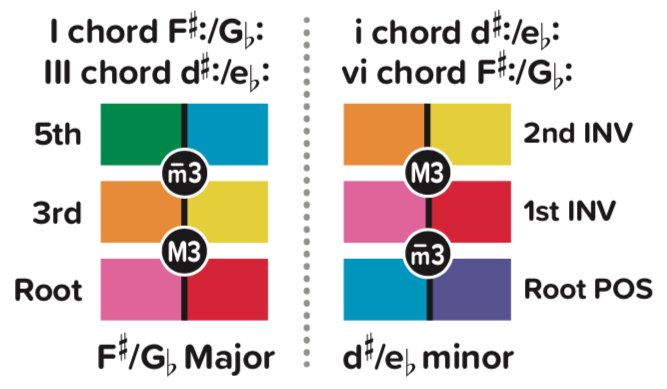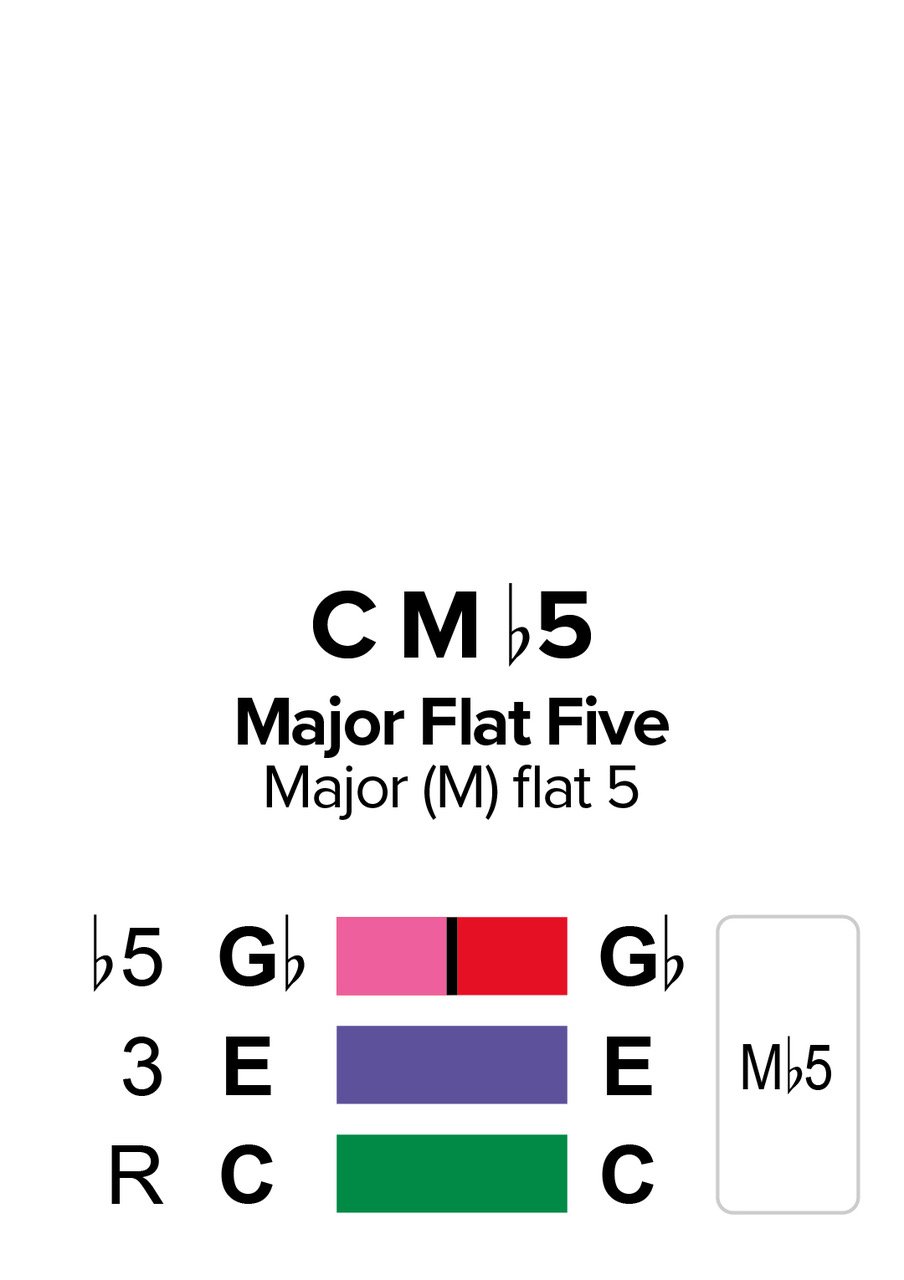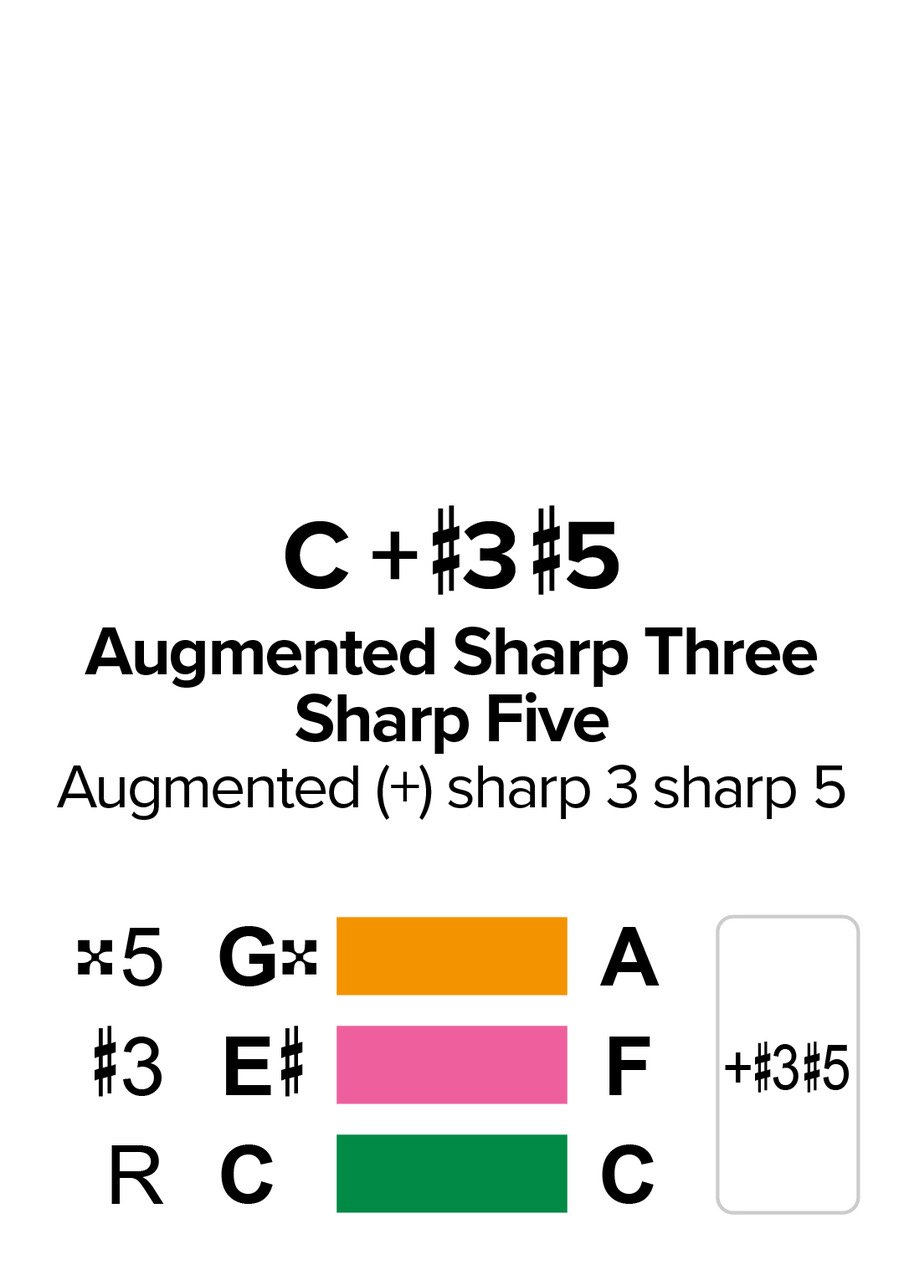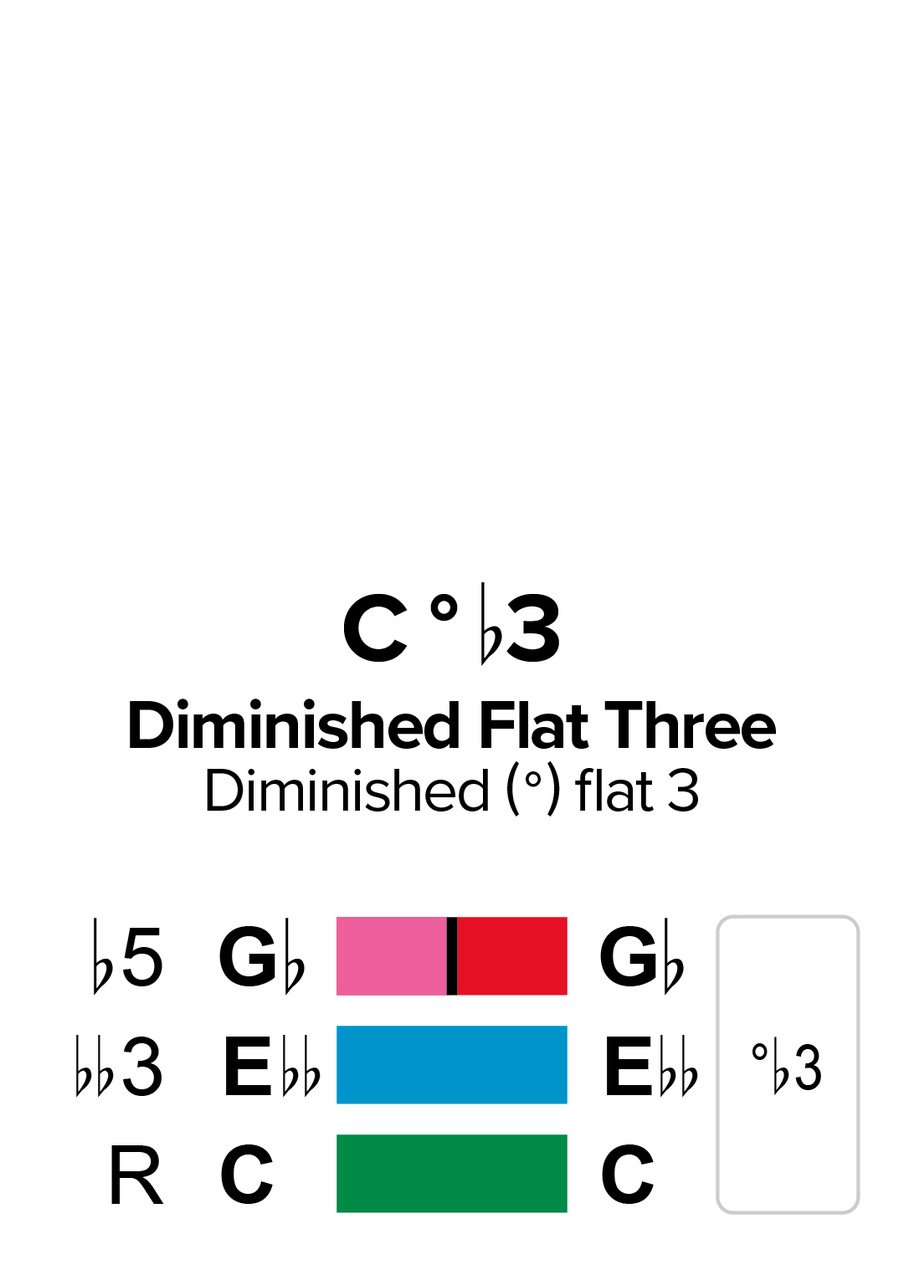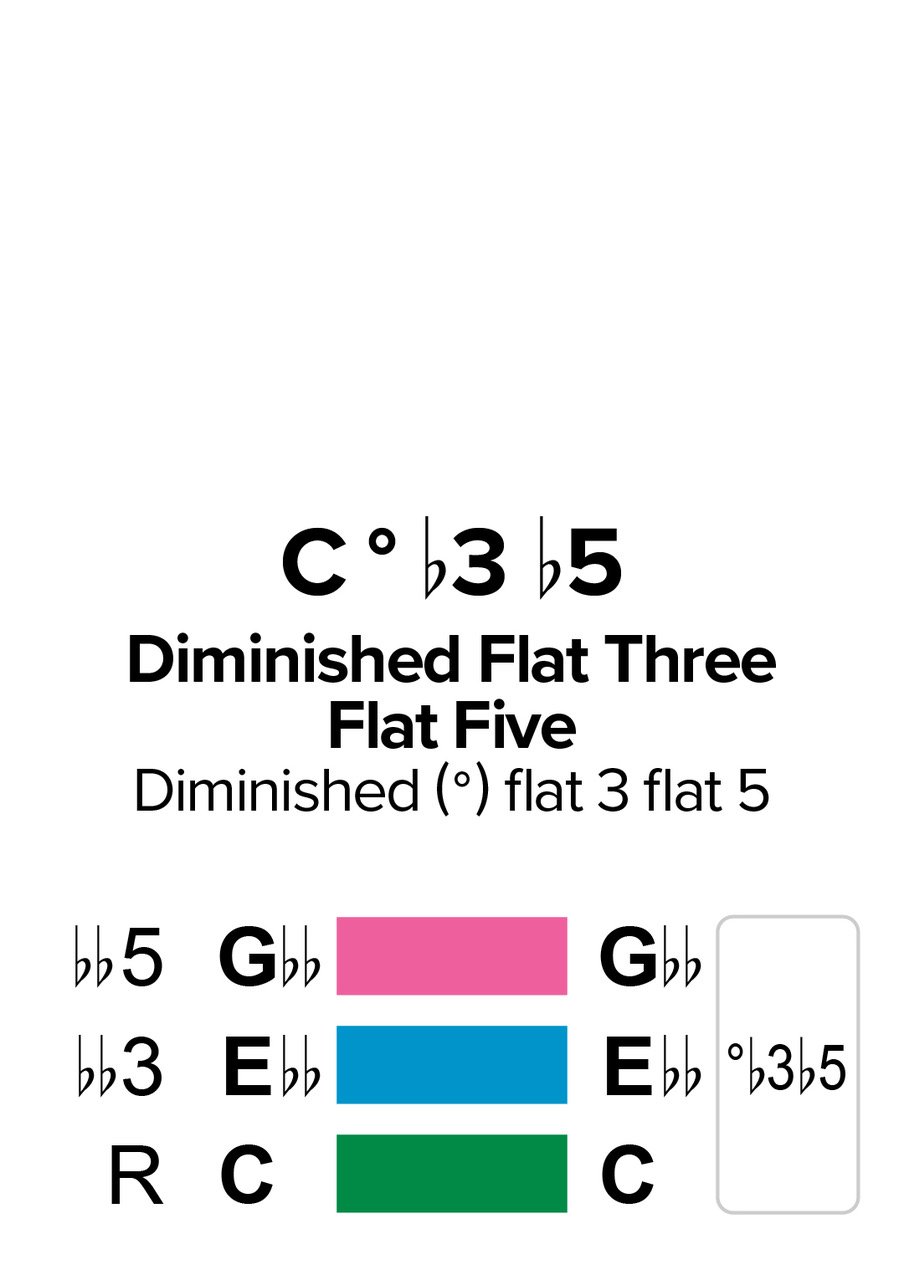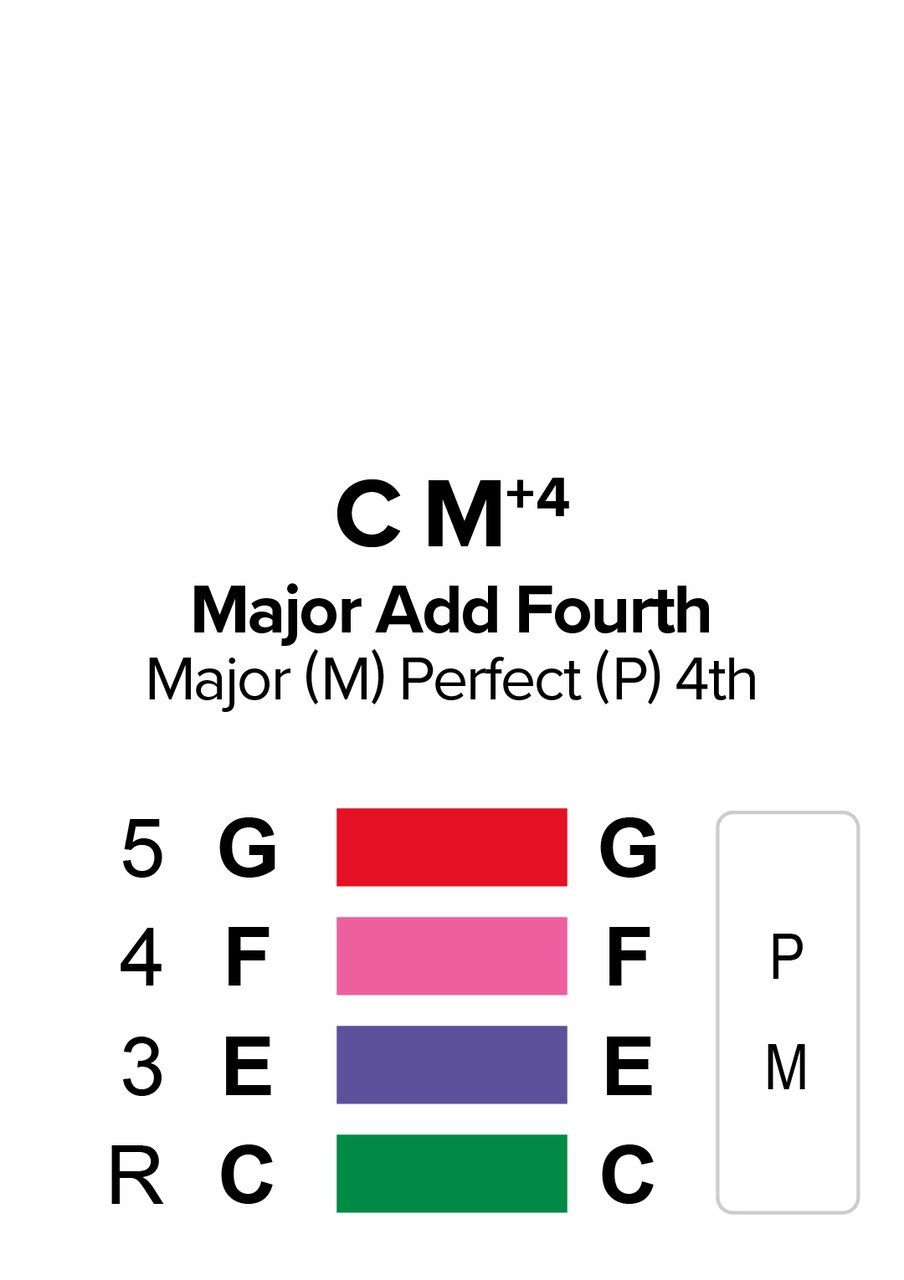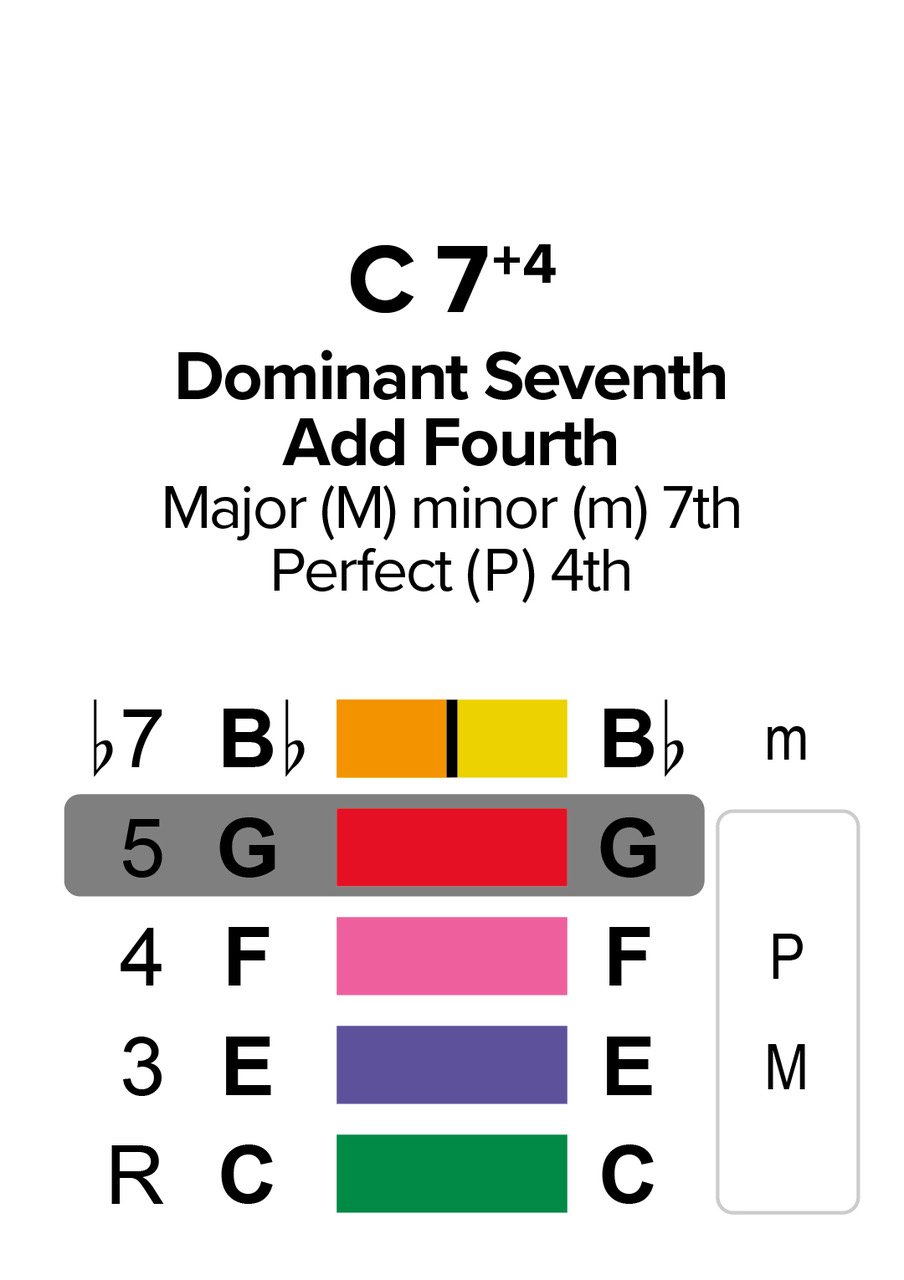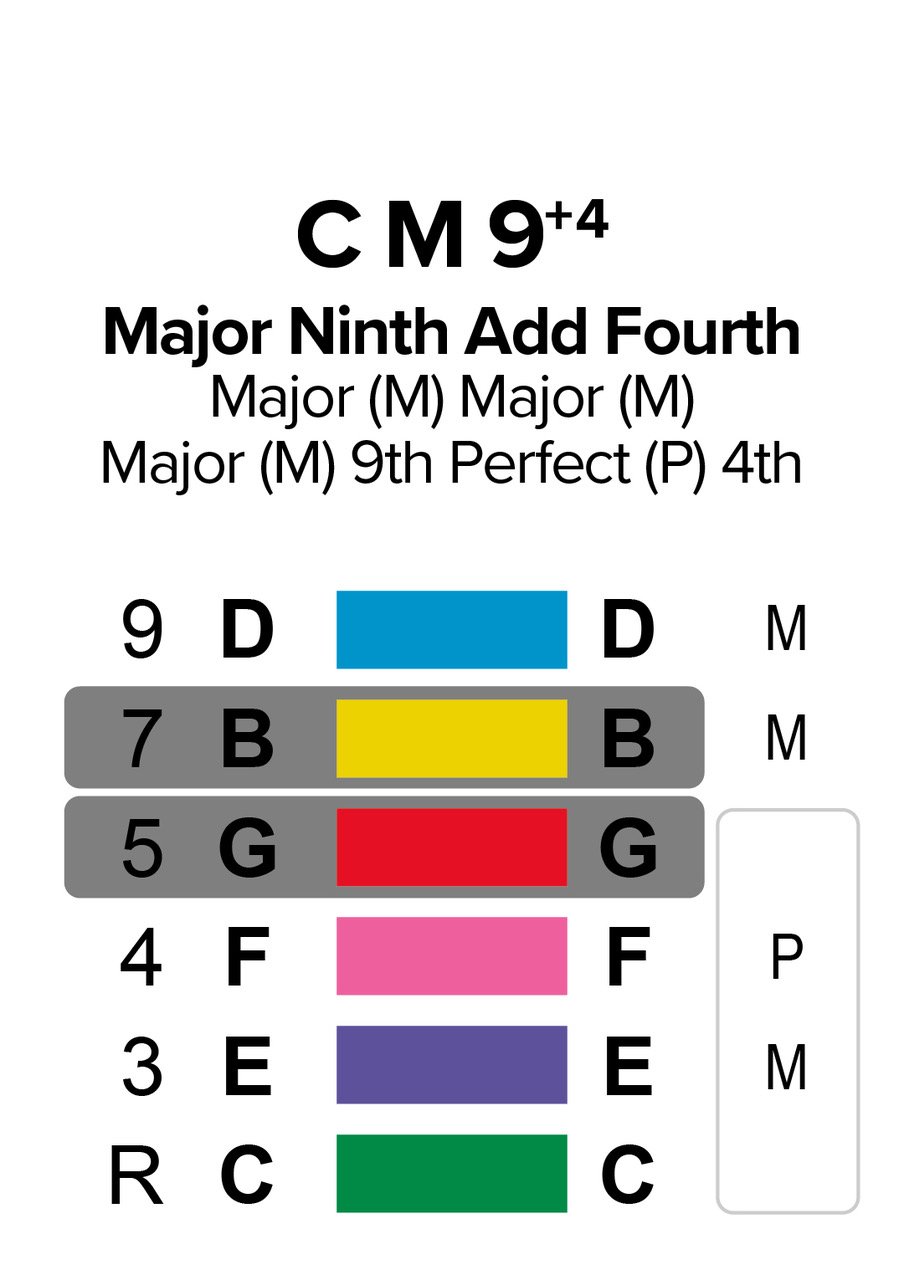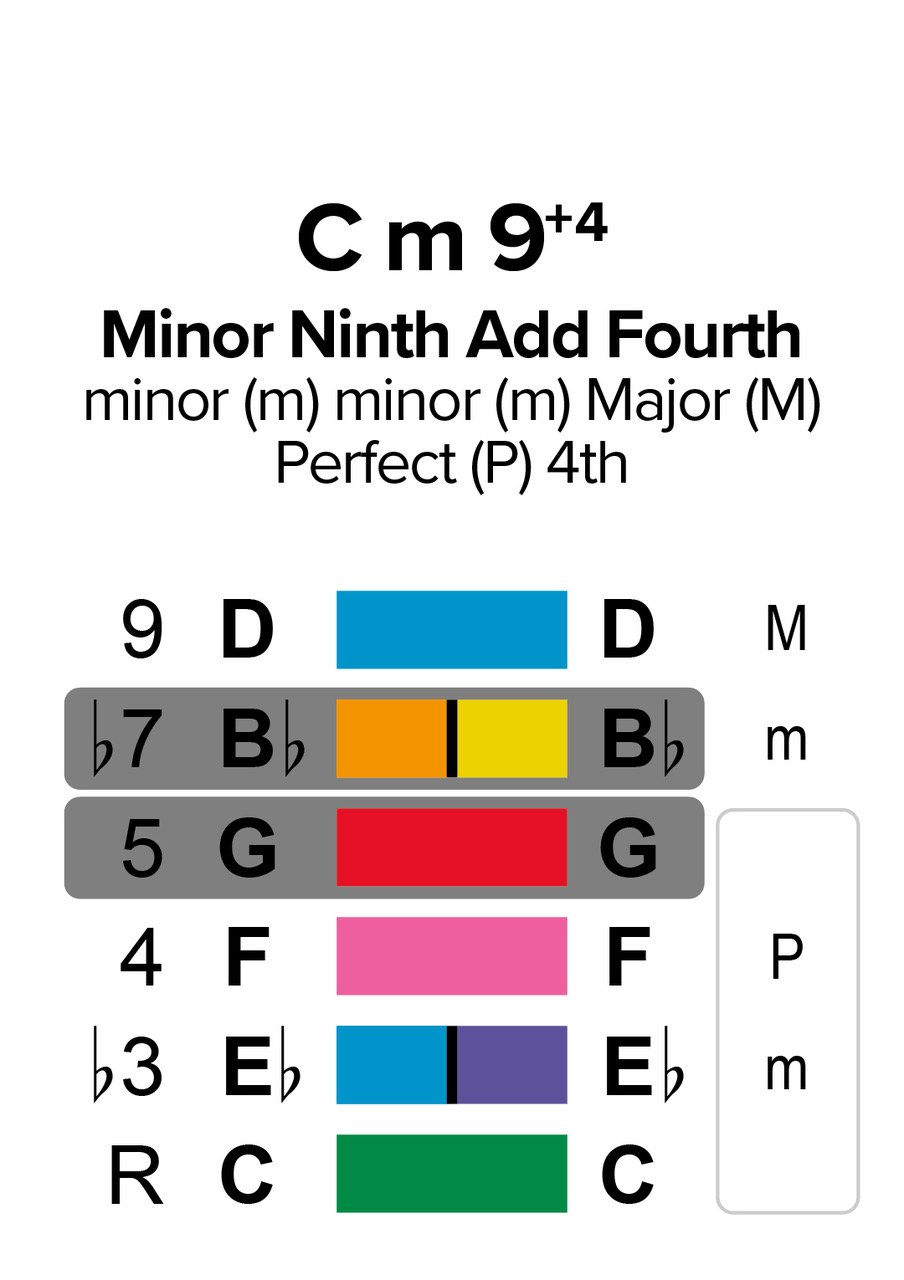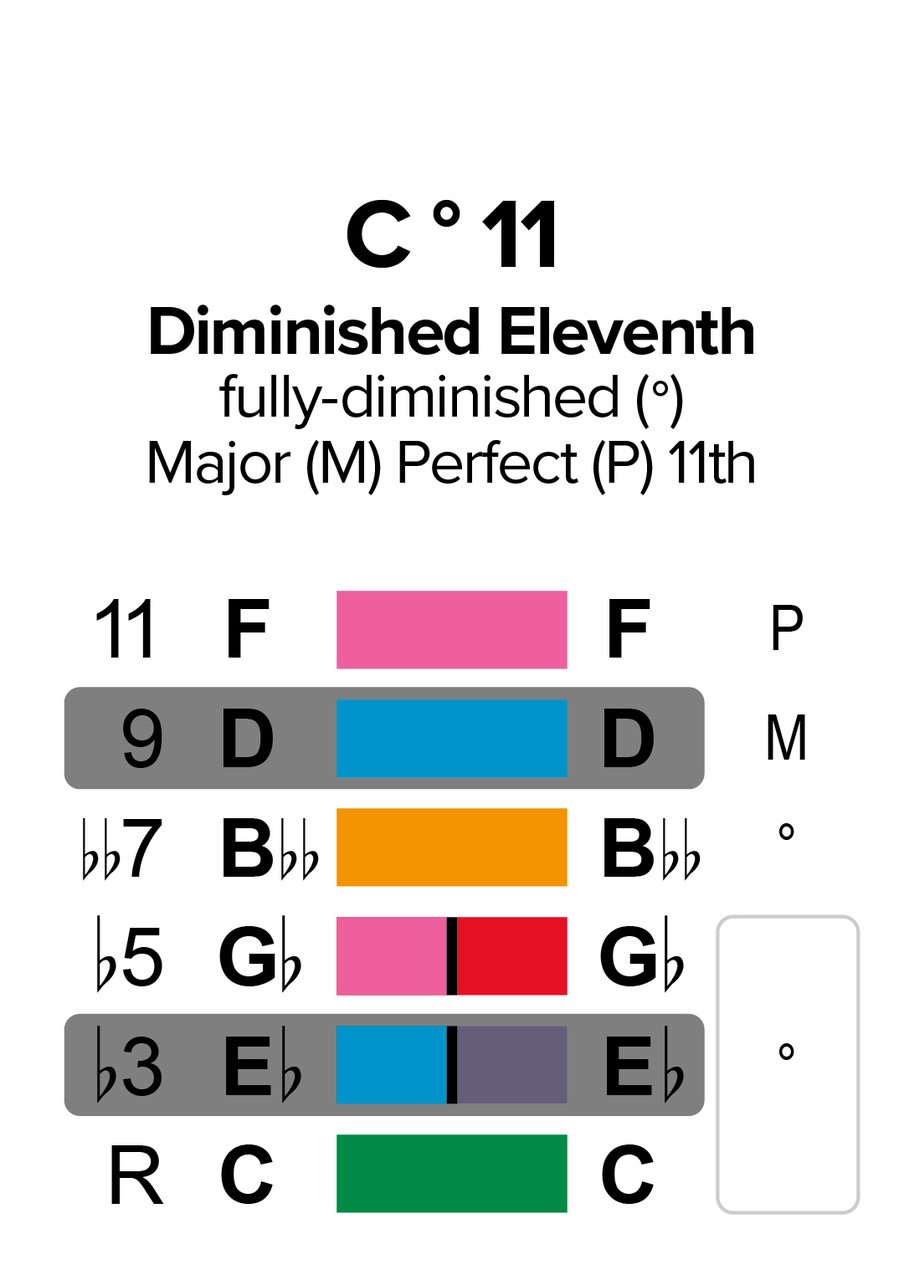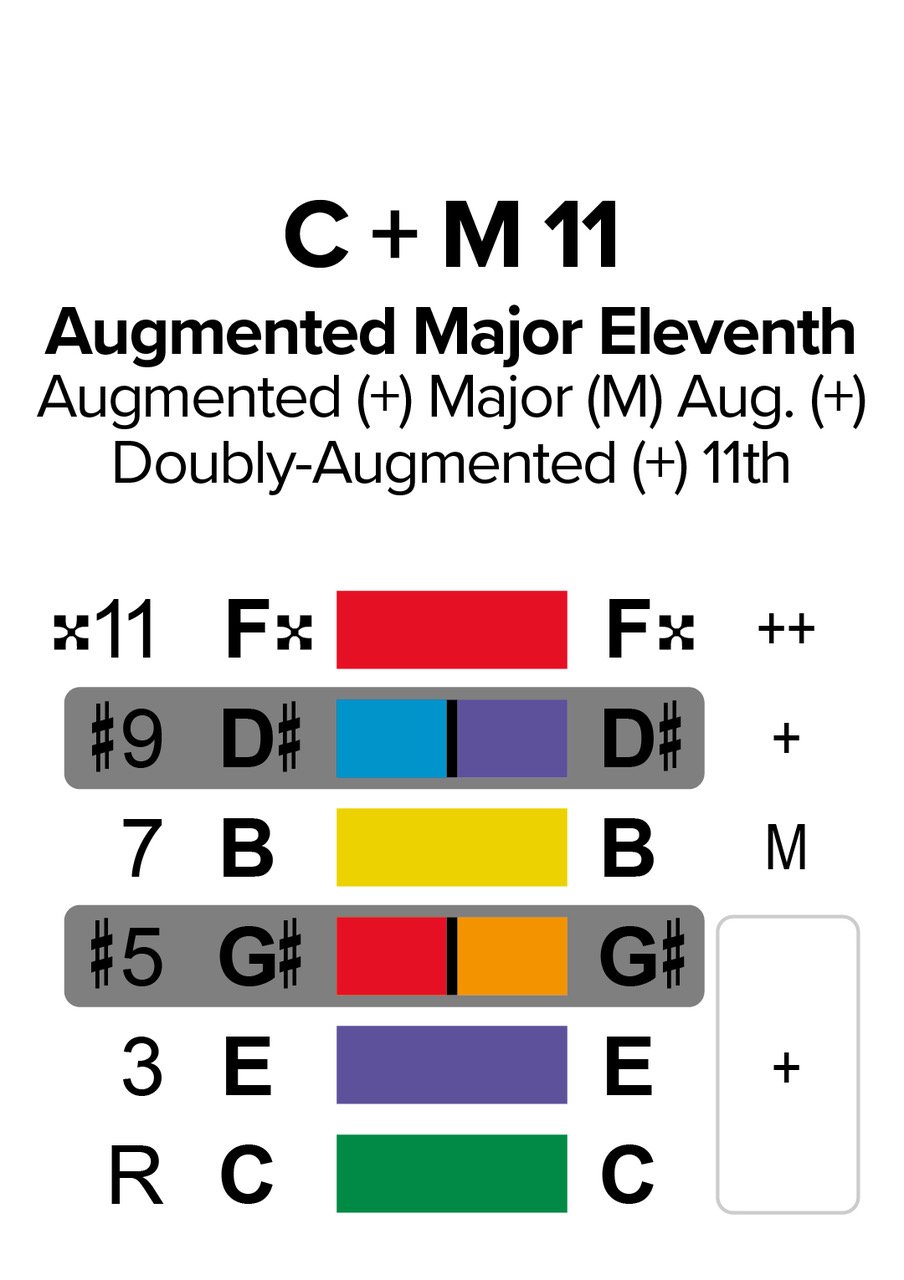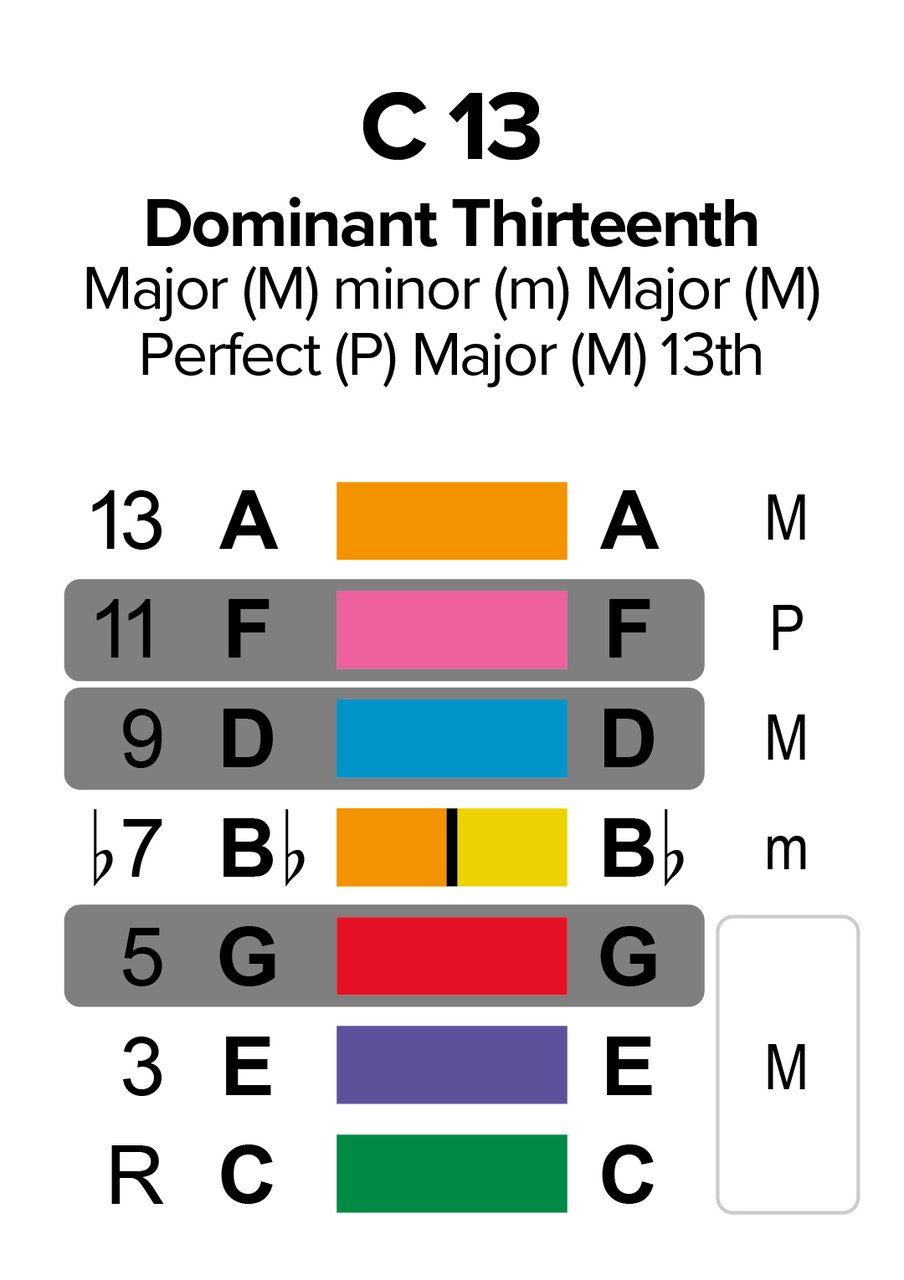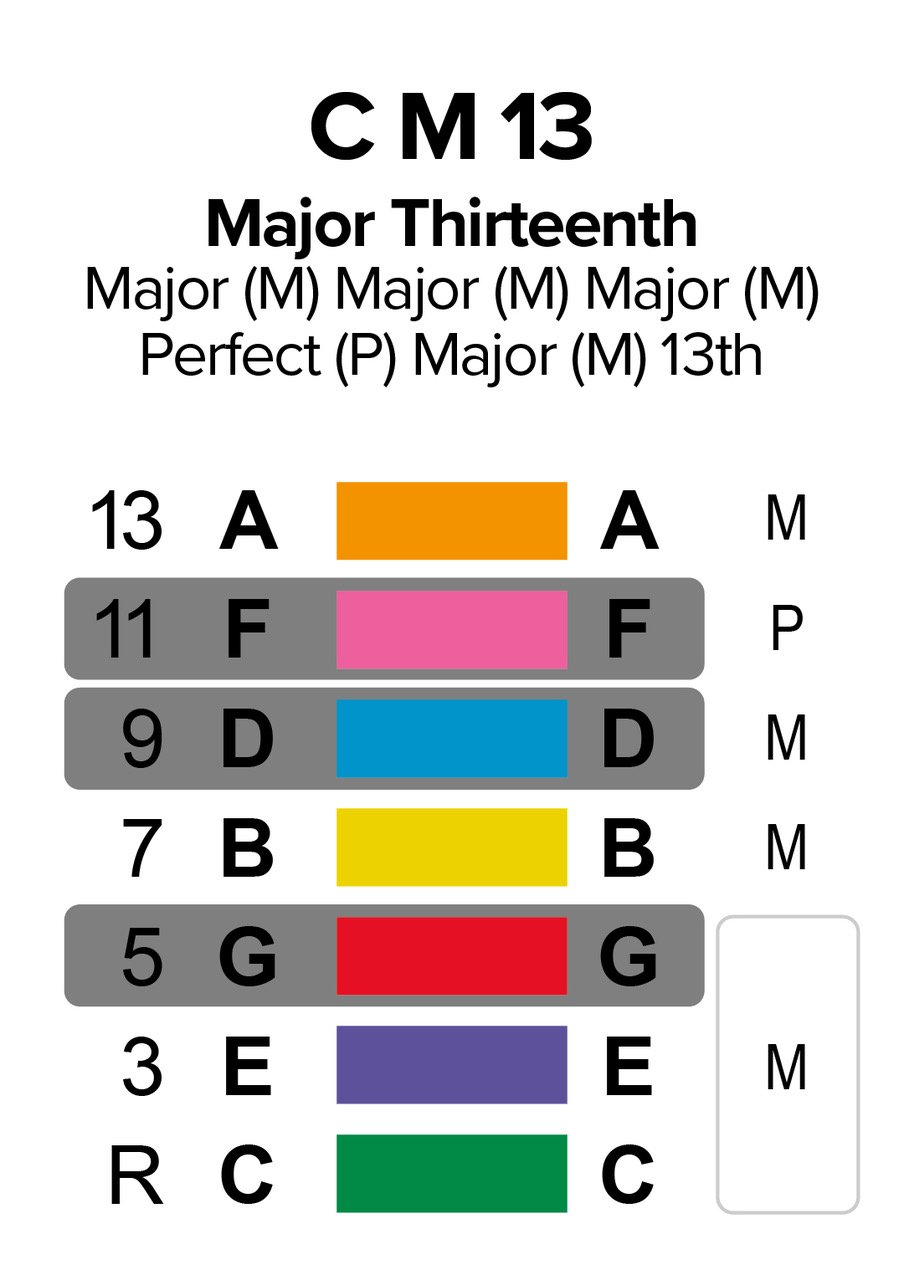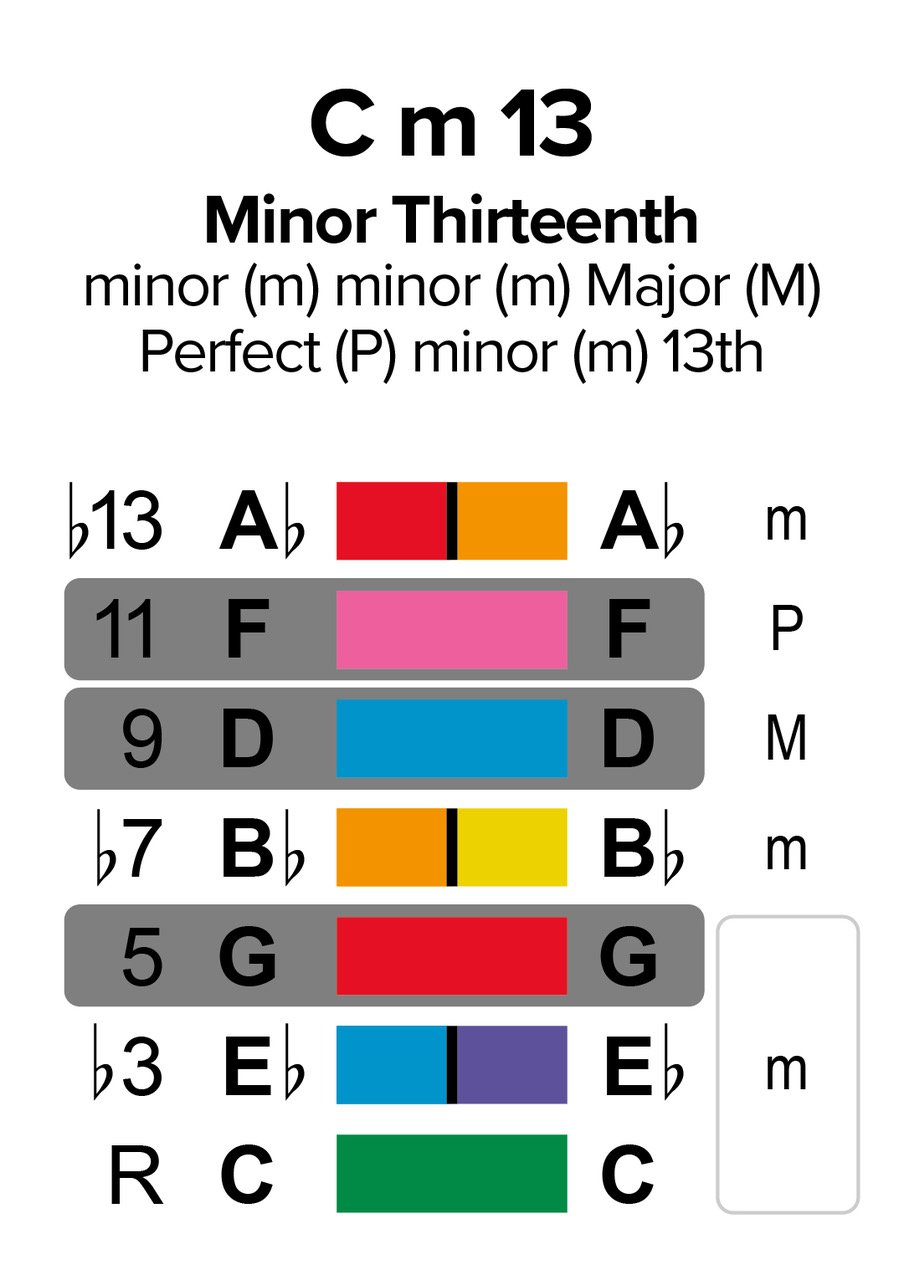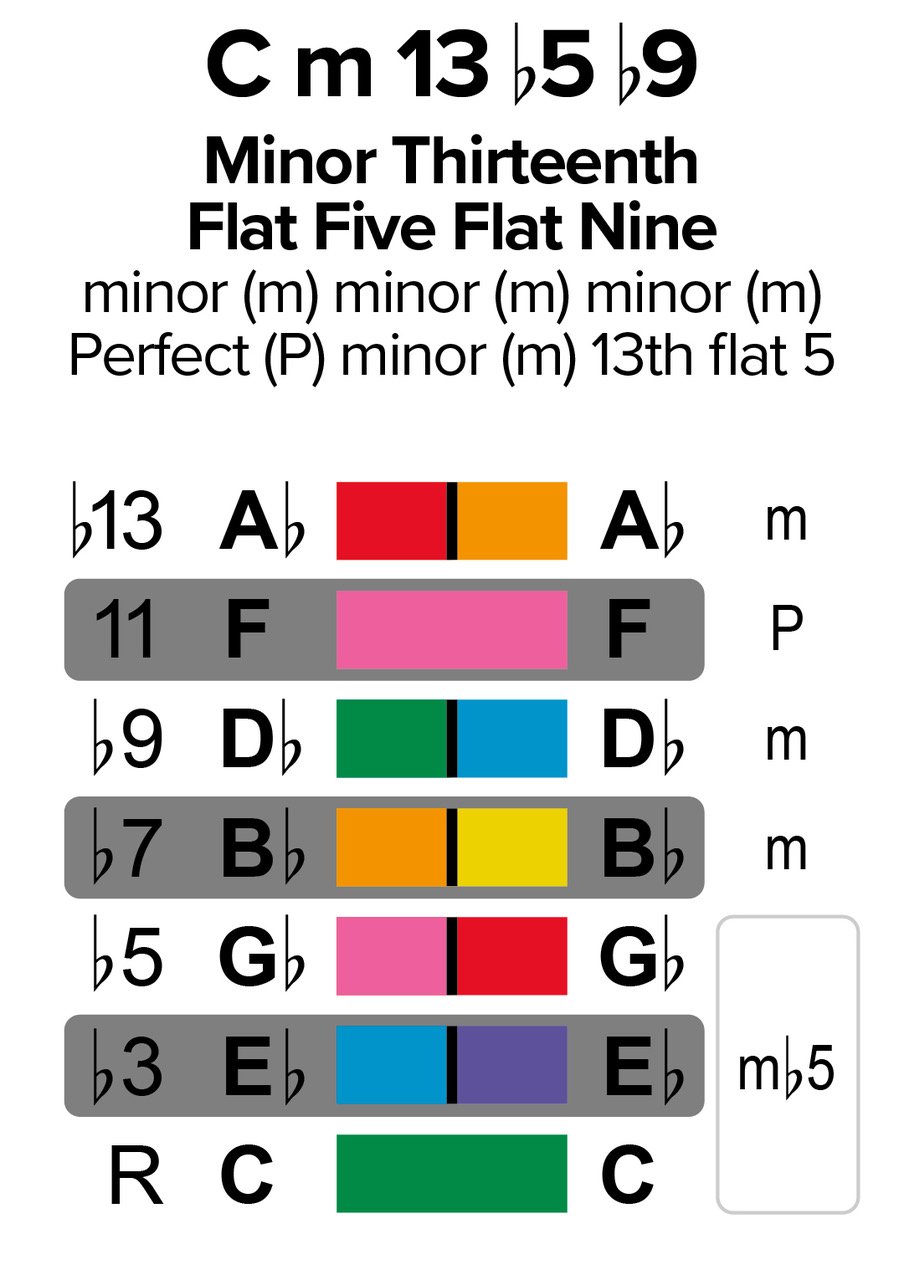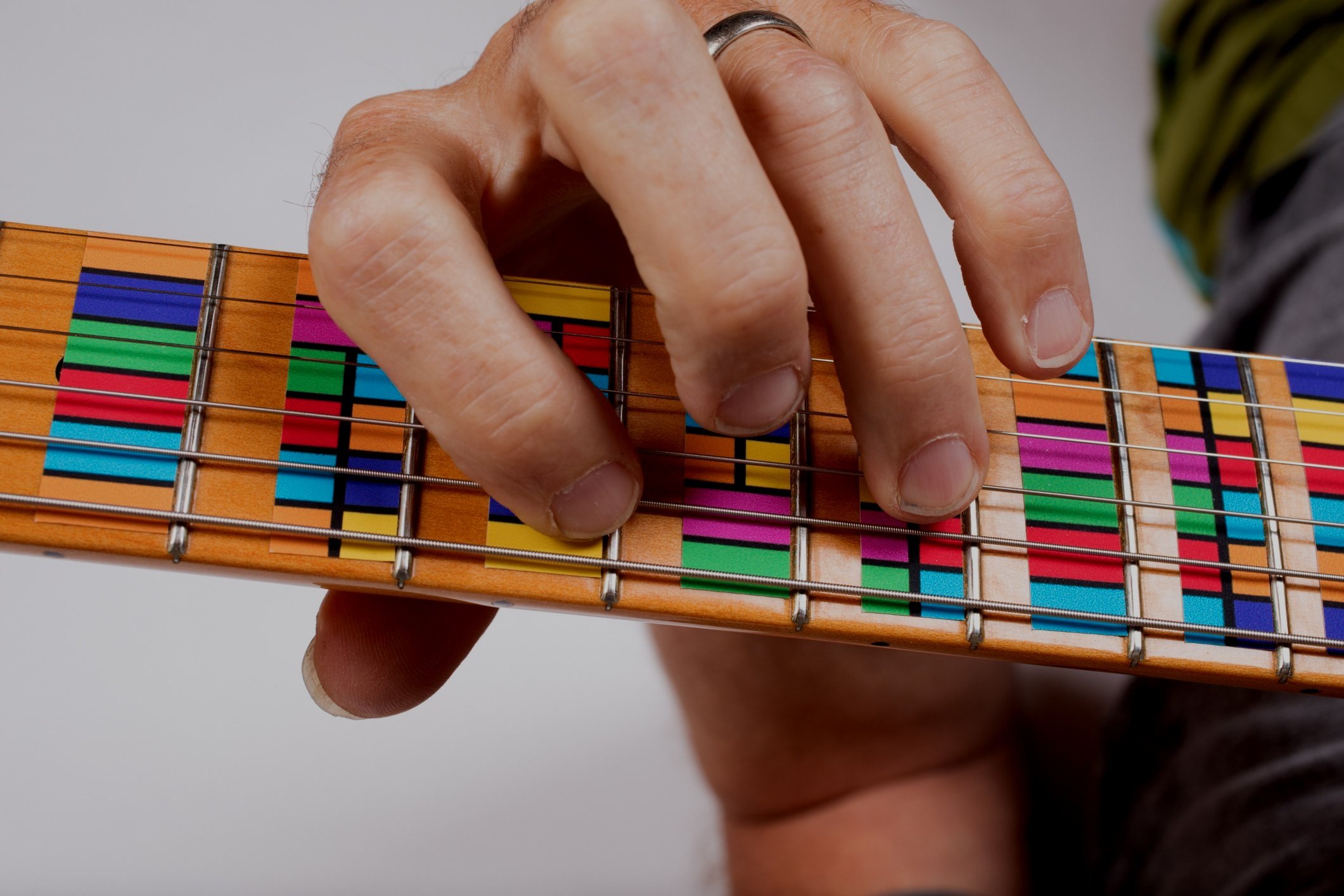
Color Coded
Music Chords
“An innovative way to make music fun and easy to comprehend for children and people of all ages." - Gardner Cole
"If you are a beginner or an expert guitarist it doesn't matter, the Musical Colors stickers improve your knowledge and familiarity with the fretboard." - Antonio Davide Pino
"Musical Colors stickers open new possibilities in musical ideas when composing or improvising on the instrument. They are very helpful in growing as a musician!" - Ray Flores
“Easy to understand with a fun filled process. I would have been lost without it and paid for lessons.” - Anton Nathrass
“These stickers inspired and supported my creative and unique approach to song writing.” - The Wiley One
“I believe in this product, the guitar stickers helped me visually learn the fretboard with ease.” - Brian Howland
“A perfect aesthetic compliment, as well as opening up some doors theory wise and visually.” - Russell Anthony
“I just love improvising on my guitar and actually seeing all the patterns at my fingertips." - Michael Wiley
“An innovative way to make music fun and easy to comprehend for children and people of all ages." - Gardner Cole "If you are a beginner or an expert guitarist it doesn't matter, the Musical Colors stickers improve your knowledge and familiarity with the fretboard." - Antonio Davide Pino "Musical Colors stickers open new possibilities in musical ideas when composing or improvising on the instrument. They are very helpful in growing as a musician!" - Ray Flores “Easy to understand with a fun filled process. I would have been lost without it and paid for lessons.” - Anton Nathrass “These stickers inspired and supported my creative and unique approach to song writing.” - The Wiley One “I believe in this product, the guitar stickers helped me visually learn the fretboard with ease.” - Brian Howland “A perfect aesthetic compliment, as well as opening up some doors theory wise and visually.” - Russell Anthony “I just love improvising on my guitar and actually seeing all the patterns at my fingertips." - Michael Wiley
Upgrade Your Instrument And Start Playing The Simplest Guitar Chords Using Chord Cards That Work With Many Other Musical Instruments
There Are A Bunch Of Easy Guitar Chords And Easy Ukulele Chords To Begin With And Many More Chord Cards To Play On Your Instrument
From Guitar Chords For Beginners And The Basics Of Guitar Chords To Playing More Complex Chords, These Colorful Chord Cards Rule
SCROLL DOWN TO LEARN TO PLAY EVERY C CHORD
& BUILD YOUR OWN AT THE BOTTOM OF THIS PAGE
Play Harmonies
with Natural Note Chords
When you play three (3) or more different notes at the same time, it is called Harmony or playing chords. Chords can be played one after another in a rhythmic manner to create a song. Let’s practice chords with only the solid-colored notes. Begin by playing three (3) solid-colored notes at the same time to form a triad (a three-note chord). See the color coded chord card gallery below of the seven (7) natural note triads with their corresponding names and Roman numeral functions in the key of C: (C Major) and a: (A minor). Chords are built from the bottom up, as with scales, but in 3rds. For triads, first comes the Root note, then the 3rd of the chord, and last the 5th. It doesn’t matter in what order these chord notes are stacked as long as they all sound when you play.
Now You Can Play All Seven Triads
Using Only The Solid Colored Natural notes in music
SWIPE LEFT & RIGHT OR CLICK ARROWS TO SCROLL THROUGH CHORDS
It is also important to understand that the lowest sounding note in any chord will always determine which Chord Inversion (INV) you are playing (either in Root POSition, 1st INVersion, or 2nd INVersion for triads, and higher up as chord structures grow to contain more notes). Again, you don’t need to know what the chord structure is or the scales they originate from in order to make music. When you play only chords with solid-colored notes, and someone else plays a melody with the same solid-colored notes (being in tune with each other), you will sound musical together. This rule also applies to playing chords with the “stripes” as detailed in the next lesson; however, for the “solids”, open strings on stringed instruments are natural notes, so include them in your playing and strum away. This creates chords with four (4) to six (6) natural notes that sound rich and complex and still remain playable without fully understanding their chord structure and function in a musical key.
Play Harmonies
with Sharp & Flat Notes
There are two (2) chords to learn when it comes to the two (2) striped note Pentatonic Scales from the scales lesson page. One chord is Major, and the other is minor. Without hitting any open strings, practice playing them one after the other in a rhythmic pattern to create a song. Any three different “striped” notes will form a chord, but only these two chords and their inversions, are Major and minor.
Remember: You’ll develop finger “muscle memory” as you practice and slide these fingering patterns to play other similar chords along your instrument’s neck or keyboard.
-
Natural Notes – are the seven (7) white piano keys on a keyboard (A, B, C, D, E, F, and G)
Sharp & Flat Notes – are the five (5) black piano keys (A#/Bb, C#/Db, D#/Eb, F#/Gb & G#/Ab)
Enharmonic Spelling – a note that is equivalent to some other note but named differently
Octave – the interval between one musical pitch and another with double its frequency
Semitone – smallest interval in music (Halftone or half step) equal to a 12th of an Octave
Wholetone – a Major 2nd (also called a whole step) is a 2nd spanning two semitones
Interval – difference in pitch between two near occurring notes measured in semitones
Root Note – musical note at base of a scale or chord that serves as the home base name
Minor Scale – seven notes spaced apart by whole (W) and half (H) tones: (W-H-W-W-H-W-W)
Major Scale – are seven notes spaced apart by whole and half tones: (W-W-H-W-W-W-H)
Musical Key – a group of pitches, or scale, that forms the basis of a musical composition
Melody – a linear succession of musical tones that the listener perceives as a single entity
Pentatonic Scale – a fundamental form of a musical scale with only five notes per octave
Muscle Memory – procedure to consolidate a motor task into memory through repetition
Harmony – the process by which individual sounds are joined together into compositions
Chords – any harmonic set of three (3) notes that are heard as if sounding simultaneously
Chord Inversion – the relationship of a lowest sounding note to other notes in that chord
Color Coded Chord Cards
Available Here Built On The Note C Natural
-
To play any one of the musical chords listed below on a musical instrument that has Musical Colors sticker guides installed, scroll to the chord you wish to play by clicking the left or right arrows, clicking on one of the thumbnails shown (desktop only), or by swiping left and right. Once you arrive at the chord of your choosing, begin at the bottom root note of the chord (marked R), and continue to locate the stacked notes of the chord on your instrument, so that you can grab and play simultaneously all the notes shown (although preferable to be included, notes which are inside a greyed out rectangle do not necessarily have to be played in order to sound the chord in question).
Chords are listed below with their written and spoken chord names (including its long hand interval sonority construction), the first column shows the chord note degrees (intervals) for every musical note found in the chord, the second is the actual notes associated with that chord in root position without inversion, then their corresponding Musical Colors color coded designations, any alternate musical note letter names in the fourth column, and lastly the “quality” or sonority (M, m, +, or º) for the bottom triad (i.e. the first 3 bottom notes shown inside a light grey vertical rectangle bottom right of each card including any sharp or flat alteration, and sometimes including additional 2nds or 4ths within the triad) and the final continuing Major, minor, Augmented, diminished and Perfect intervals (M, m, +, º and P) that build the chord stacked on top one by one measured rom the same root note.
SWIPE LEFT & RIGHT OR CLICK ARROWS TO SCROLL THROUGH CHORDS
TRIAD CHORDS ON C
24 Chords With 3 Notes Each Including 4 Note Add Chords
SEVENTH CHORDS ON C
17 Chords With 4 Notes Each Including 5 Note Add Chords
NINTH CHORDS ON C
17 Chords With 5 Notes each Including 6 note Add Chords
ELEVENTH CHORDS oN C
6 Chords With 6 Notes each And no other Add Chords
THIRTEENTH CHORDS ON C
13 Chords With 7 Notes each and No Other Add Chords
BUILD A CHORD ON C
-
It is useful to know how to build any musical Chord on any musical Note, and what other different Notes need to be present when you play a Chord. The fundamental Chord is the Triad, a 3 Note Chord. You can add up to four extra Notes on top of this 3 Note Harmony by clicking the left and right arrows on each Note below. You can add Intervals of 7ths, 9ths, 11ths and or 13ths to any base Triad you create, which enriches the Chord Sonority or sound quality of the Chord when played on a musical instrument. It is important to understand that for Chords larger than the Triad, at least four specific Notes have to sound in order to keep the quality or Sonority of the chord in question. Full Thirteenth Chords with seven Notes, can have up to three Notes removed from their inner structure (i.e. the 11th, the 9th and or the 5th). For Eleventh Chords with six Notes, up to two Notes can be removed (i.e. the 9th and or the 5th). Seventh Chords can only have the 5th removed if desired, which in that case would make them a Seventh Chord Triad with a missing 5th. The 5th can also be omitted from the base Triad and replaced by any one other Note above it to create other expansive Triads, such as Ninth Chord Triads, Eleventh Chord Triads and Thirteenth Chord Triads. These empty types of Chords are all called Shell Chords because they are missing some of their inner musical Notes, making them less dense sounding and more open to musical interpretation. Finally, make sure that no Notes are doubled right next to one another in the Chord you build. If you wish to insert an Octave into the structure of the Chord, at least one Note should be between the two doubled Notes.
